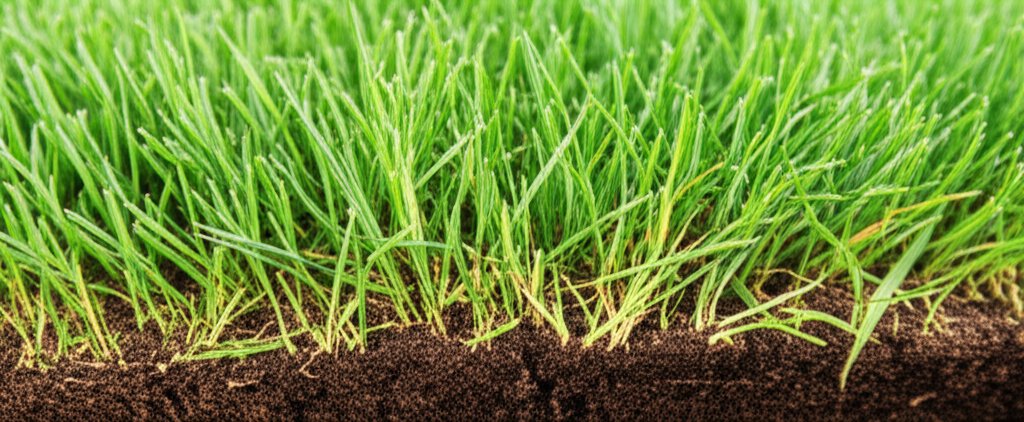Grass as a Climate Ally: Storing Carbon in Your Soil
Have you ever gazed across your lawn and wondered if that modest patch of green could play a role in something as vast as combating climate change? Many homeowners wrestle with the balance between maintaining an attractive yard and ensuring it benefits the environment. The good news is that grass, when managed thoughtfully, can indeed become a powerful tool for capturing carbon and enriching the earth beneath your feet.
How Grass Captures and Stores Carbon
Carbon exists everywhere, from the air we inhale to the ground we walk on. When it lingers in the atmosphere, it contributes to global warming, but when it is sequestered in soil, it supports a vital cycle that nourishes plants and strengthens the earth. Grass plays a unique role in this process through carbon capture, pulling carbon dioxide from the air during photosynthesis and transferring a portion of it into the soil through its roots, where it can remain locked away for decades.
This natural mechanism transforms your lawn from mere decoration into an active participant in environmental health. With intentional care, grass can contribute to a climate-positive landscape, making a tangible difference over time.
Redefining the Purpose of Your Lawn
Lawns often evoke memories of childhood games or lazy summer days, yet they sometimes carry a stigma for demanding excessive water and chemical inputs. However, not all lawns are equal in their impact. A sustainably designed yard can serve as a carbon reservoir, offering both aesthetic appeal and ecological value. Rather than viewing your lawn as a chore, consider it a partnership where you provide mindful care, and it returns benefits to both you and the planet.
Selecting Turf for Maximum Impact
The type of grass you choose significantly influences its carbon-storing potential. Varieties with deep, robust root systems capture and hold more carbon compared to those with shallow roots. Opt for sustainable turf blends tailored to your local climate, often labeled as drought-tolerant or low-maintenance. These grasses not only sequester more carbon but also require less water and upkeep, reducing your environmental footprint while maintaining a healthy lawn.
When purchasing seed or sod, prioritize options that thrive with minimal resources. This choice sets the foundation for a yard that works harder for the climate without demanding more from you.
Everyday Habits for a Carbon-Positive Lawn
Transforming your lawn into an environmental asset does not require a complete overhaul. Small, consistent practices can yield significant results over the seasons. Consider adopting these straightforward strategies:
- Raise your mowing height. Cutting grass slightly taller promotes deeper root growth, enhancing carbon storage and resilience.
- Leave clippings behind. Allow grass clippings to decompose on the lawn, returning valuable nutrients and organic matter to the soil.
- Water deeply and infrequently. This approach encourages roots to extend downward, securing carbon deeper in the earth while conserving water.
- Minimize chemical use. Excessive fertilizers and pesticides can disrupt soil microbes essential for carbon retention, so use them sparingly.
- Incorporate compost. Applying a thin layer of compost boosts soil health, increasing its capacity to store carbon and support plant growth.
These habits, though simple, compound over time to create a lawn that quietly contributes to a healthier planet.
The Broader Impact of Sustainable Lawns
What makes sustainable lawns so compelling is their accessibility. Unlike complex environmental initiatives, your yard is a space you can directly influence. When multiplied across countless homes, community parks, and public spaces, the collective carbon storage becomes substantial. Grasslands already rank among the planet’s largest natural carbon sinks, and well-managed lawns can amplify this effect, contributing to a more balanced ecosystem one yard at a time.
Harmonizing Aesthetics with Environmental Care
A vibrant, green lawn and sustainability are not mutually exclusive. By selecting the right turf and adopting mindful maintenance practices, you can enjoy a beautiful outdoor space while knowing it supports climate goals. This balance allows your yard to be both a personal retreat and a quiet force for environmental good, proving that beauty and responsibility can coexist seamlessly.
Nurturing Your Lawn for Long-Term Benefits
Tending to your lawn is less about achieving perfection and more about fostering a living system that thrives with minimal intervention. Over time, you may notice richer soil, hardier grass, and a yard that demands less effort to maintain. These signs indicate your lawn is not only visually appealing but also deeply integrated into a cycle of environmental renewal. Stick to these small, intentional actions through each season, and you will cultivate a space that benefits both your home and the world beyond it.
